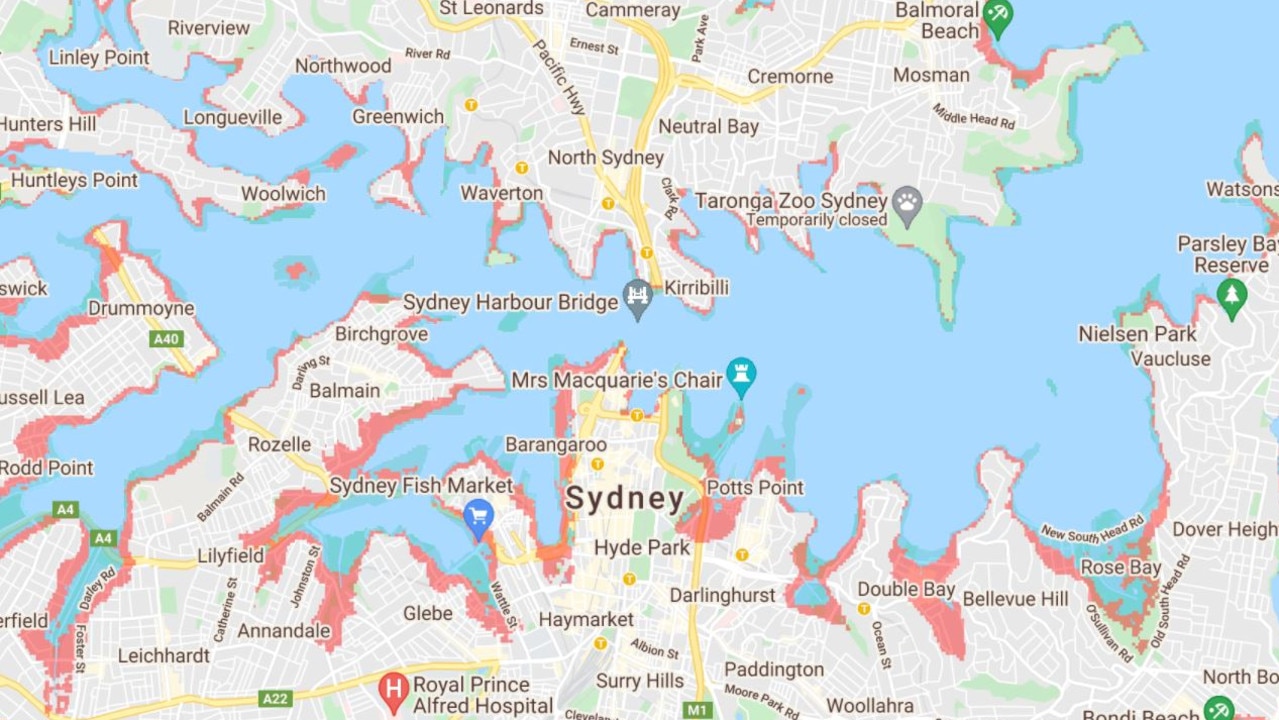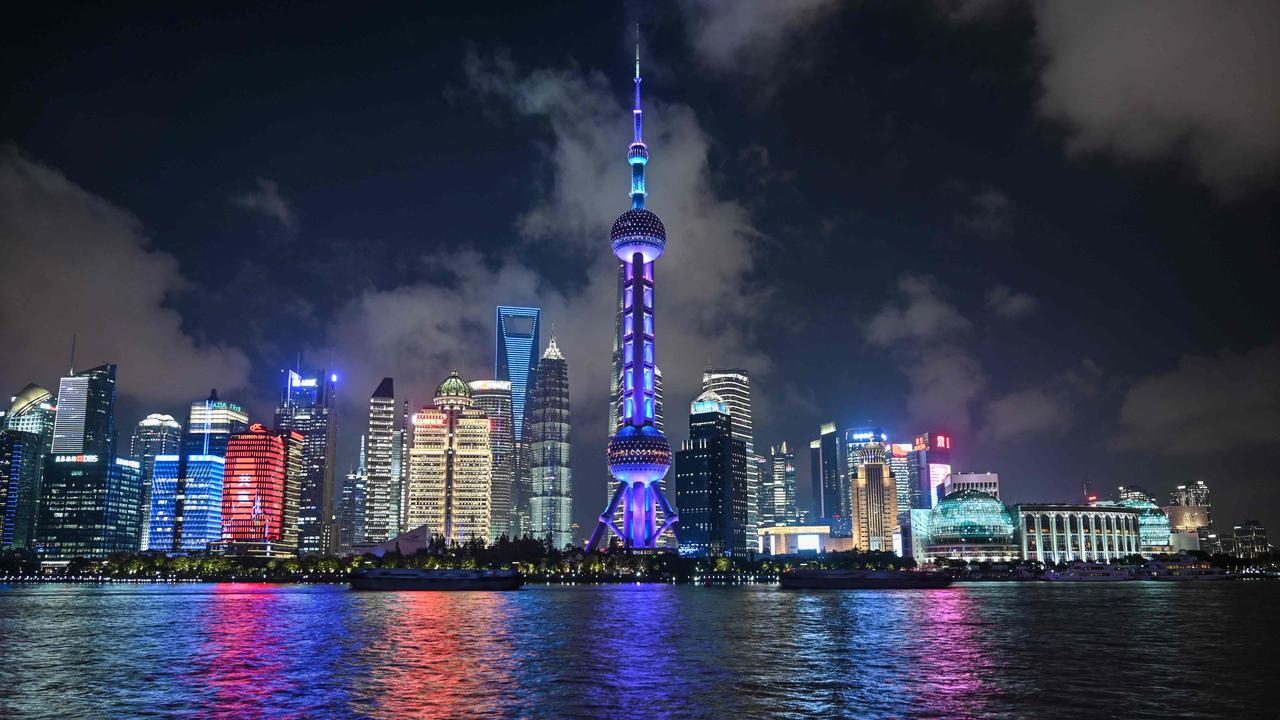Hundreds of millions of people will be impacted by sea level rise in the coming decades
New interactive maps show how sea level rise will impact some of the most iconic buildings in the world including Sydney’s Opera House.
Hundreds of millions of people in some of the world’s biggest cities could be living under the high tide line by 2100, according to new analysis.
Climate Central has released a study that looks at the impact of climate change-related sea level rise, with an interactive map showing parts of the world that will eventually be below the tideline under different warming scenarios.
The world is currently on track for 3.5C of warming by 2100 and new visuals show the impact of rising sea levels on iconic locations across the world including in Sydney and Melbourne over hundreds of years.
The study found the cities most impacted by sea level rise (with a population of at least one million people) included Shanghai in China, Haora in India and Hanoi in Vietnam.
About 96 per cent of those living in Shanghai (31 million people) could be living under the high tide line by 2100 under a 4C warming scenario, and 94 per cent (30 million) under a 2C scenario.
An estimated one billion people, or about 15 per cent of the current global population would be impacted if average global temperatures rose by 4C.
News.com.au is highlighting the impacts of climate change as part of the Time Is Now series, in partnership with the Monash Climate Change Communication Research Hub.
It has previously reported on the difficulty of getting information about the potential impacts of climate-related risks on Australian properties including sea level rise.
Climate Central has now released visualisations of potential impacts using Google maps, as well as video that shows the Opera House separated from the rest of Sydney, and water creeping up on Melbourne’s Centre for Contemporary Art.

The analysis shows about 5.3 per cent of the global population, or about 360 million people are estimated to live on land that will be below high tide lines by 2100, due to sea level rises that are already locked in.
If there is 2C of warming, this would threaten land home to roughly twice as many people.
Once global warming hits 4C, this could impact up to one billion people.
Countries in east, southeast and South Asia face the greatest overall exposure, with Asian countries making up nine of the top 10 nations most at risk.
Most notably, land home to over half the populations of Bangladesh and Vietnam fall below
the long-term high tide line, even if warming is limited to 2C.

Countries from every continent in the world, except Australia and Antarctica, are included in the top 20 most impacted countries.
The figures also reveal China could be one of the biggest beneficiaries of climate change action, with about 10 million less people impacted by sea level rise by 2100, if there is 2C of warming compared to 4C.

However, the analysis does not look at the impact of future artificial coastal defences, which many governments are likely to construct to protect properties.
Some cities already include areas below the high tide line and these properties are likely defended by existing infrastructure.
This includes residents of Tokyo and Jakarta, which have already experienced close to 5m of subsidence in some neighbourhoods.
Tokyo has constructed large levees to deal with this but measures in Jakarta have been more limited and in 2019, the president of Indonesia said the nation’s capital would be moved to higher ground.
Defences will be costly and not every country would be able to afford them. They may also not be an option for every place as not every environment is suitable for levees or other defences.

Some of the countries with the most at stake are also those who have invested heavily in coal-fired power infrastructure.
Four out of the top five countries that have the most number of residents exposed to rising sea levels (China, India, Vietnam, and Indonesia), also added the most new coal-burning capacity in a recent five-year period (2015-2019).
The report noted that the threat of sea level rise was global but it was concentrated in Asia where the future of some megacities hung in the balance.
“Results suggest that a sharp reduction in carbon emissions is in the national interest of all coastal nations,” the report said.
It said even if global warming is kept low, major adaptation efforts around the world would be required to protect coastal populations over time, as well as to preserve extensive areas of built environment.
Sea level rise is something that happens very slowly and will take centuries to play out. But what humans do now will dictate the future, with carbon already in the atmosphere expected to cause levels to rise by around 1.9 metres over the coming centuries.
“The greatest differences in the sea level consequences among emissions pathways that lead to 1.5 or 2C warming vs 3 or 4C warming will take centuries to unfold but will be determined in the coming few decades,” the report said.






